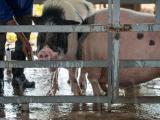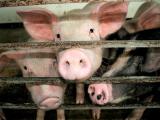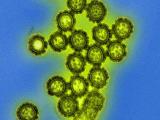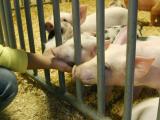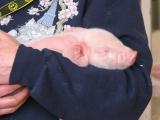Jan 15, 2009 (CIDRAP News) – Public health officials from South Dakota yesterday reported a swine influenza infection in a 19-year-old male college student, the second case in the United States in the past 2 months.
The South Dakota Department of Health (SDDH) said in a press release that the patient got sick 5 weeks ago and that the state's public health laboratory had identified the influenza A/H1 portion of the virus and that the US Centers for Disease Control and Prevention (CDC) identified the swine components of the virus.
The CDC typically receives about one report of a human swine flu case a year, the SDDH statement said. In late November the CDC, in one of its seasonal influenza activity updates, reported on a patient from Texas who was infected with swine influenza after exposure to pigs, including a sick one.
Human infections with novel influenza A subtypes now are nationally notifiable diseases in the United States
Lon Kightlinger, PhD, epidemiologist for the SDDH, said in the statement that swine influenza in humans is rare. "Most often the cases occur in people with direct exposure to pigs, such as swine farm workers," he said. "Human-to-human transmission is very rare."
Kightlinger told CIDRAP News that an investigation into the source of the man's illness did not reveal direct contact with pigs; however, officials are exploring whether he had indirect contact.
Human infections with novel influenza A subtypes now are nationally notifiable diseases in the United States.
In a recent report in the September issue of Emerging Infectious Diseases on a 2005 Wisconsin case, the authors wrote that triple reassortant H1N1 subtypes are the predominant genotype in North American pigs and that human swine flu illnesses often mimic seasonal flu infections. They recommended that clinicians ask patients with unexplained influenza-like illnesses about exposure to animals, including pigs, and visits to petting zoos and county fairs.
The CDC had noted that swine flu outbreaks in pigs typically occur in late fall and winter and that seasonal influenza vaccines are likely to partially protect against swine H3N2 viruses, but not the H1N1 subtype.
See also:
Jan 14 SDDH press release
Nov 24, 2008, CIDRAP News story "CDC reports swine flu virus in Texas patient"
CDC swine flu background

